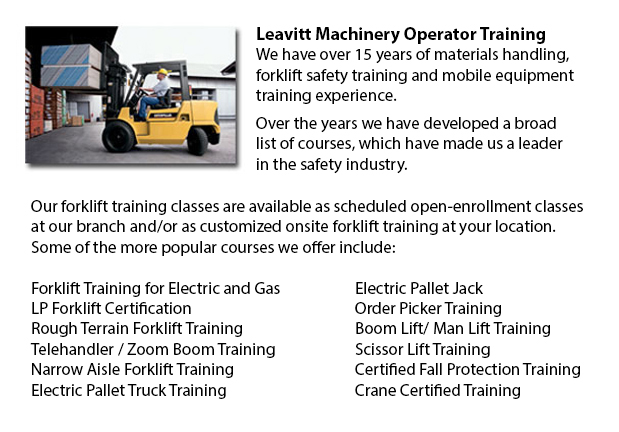
Rough Terrain Forklifts Training British Columbia - There are in fact two different classifications of forklifts within the material handling market, the industrial model and the rough terrain model. Rough terrain lift trucks first arrived on the marketplace in the 1940's and were being primarily utilized on coarse surfaces, perfect for places where no paved roads were existing, like building sites and lumberyards.
Usually, the majority of rough terrain lift trucks are run on a propane, diesel or gasoline powered internal combustion engines with a battery used for power. Many suppliers are playing with rough land lift trucks that utilize vegetable matter and run from ethanol. Substantial pneumatic tires with deep treads characterize these vehicles to permit them to clutch onto the roughest soil type devoid of any slippage or shifting.
A number of of the earliest designs of rough ground forklifts had the ability to raise in excess of 1000 lbs, via blades that could slide beneath the item, lift it slightly and shift it to a different site. After ten years on the market, rough terrain forklifts were enhanced with additional hauling power, increasing the possible load to more than 2000 lbs. In the 1960's telescoping booms were added, permitting them to stack resources a great deal higher than in previous years. The telescoping design feature is a staple of nearly all all terrain forklifts today. Present versions are capable of managing well over 4000 lbs thanks to the constant enhancements through the years. Telescoping capability has additionally improved with some designs achieving a height of 35 feet. Worker safety has also become a focus with several all terrain lift trucks currently manufactured are equipped with an enclosed cab for the operator, versus the older open air seating capacity.
The all terrain forklifts accessible today work equally as well on covered floors as on unpaved surfaces. These all terrain lift trucks are being marketed for their adaptability allowing firms to transport items from outside the plant to the inside or vice versa.
-
Hyster Forklift
Hyster Forklift Training British Columbia - Hyster is now a world leader in forklifts along with warehousing solutions. However, it began as a producer of lifting machinery as well as winches. Most of its production was concentrated in the northwes... More -
Scissor Pallet Trucks
Scissor Pallet Truck Training British Columbia - Scissor pallet lift trucks are built for moving and hauling separately stacked pallets by integrating a raising mechanism that permits the pallets on the vehicle to be elevated. This apparatus is a fir... More -
Toyota Forklift
Toyota Forklift Training British Columbia - Since 1992, Toyota Material Handling inc., U.S.A., often known as TMHU, continues to be the best selling lift truck provider in the United States. This business has been based out of Irvine, California for... More -
Komatsu Forklift
Komatsu Forklift Training British Columbia - Komatsu Forklift U.S.A. Inc. has a very good reputation for building dependable and robust forklifts. Komatsu is recognized around the world as a corporation with a rich heritage while preserving an except... More -
Boom Lifts
Boom Lifts Training British Columbia - Boom lifts are equipment that has a platform that may be lowered or raised to many heights, thus making this piece of equipment an important necessity in a wide variety of professions. Offered in quite a few par... More

Forklift Training British Columbia
TOLL FREE: 1-888-254-6157
forklifttrainingbritishcolumbia.com
Email Us
About Us


